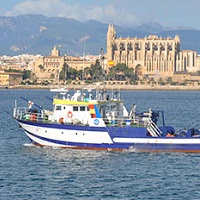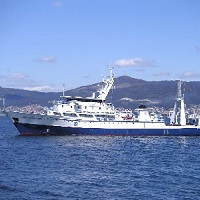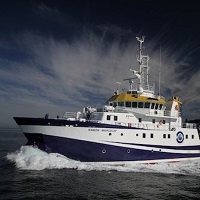Keyword
manual biota samplers
14 record(s)
Type of resources
Categories
Topics
INSPIRE themes
Keywords
Contact for the resource
Provided by
Years
Formats
Status
-

1-Evaluación del estado de las poblaciones de peces y cefalópos en el infralitoral rocoso (Subprograma PC1, Encomienda EEMM) 2-Evaluación del estado de las comunidades bentónicas en el infralitoral rocoso (Subprograma HB1, Encomienda EEMM) 3-Evaluación del estado de las especies protegidas bentónicas en el infralitoral rocoso (Subprograma HB6, Encomienda EEMM)
-

Training of students of the Master of Marine Sciences: Oceanography and Marine Environment Management of the University of Barcelona.
-

The sediments of the Galician Interior Basin realm are capable of recording the peculiar conditions of the last glacial‐interglacial dynamics transition into the current interglacial and their evolution into present day, as they are influenced by the Thermohaline Circulation (THC) and because their proximity to the important continental land‐mass of western Iberia. The knowledge of the rates and magnitudes of change of this system is critical to understand its climate dynamics, processes and feedbacks, and hence its role on a local to sub‐regional scale. The inference of these climatic mechanisms encrypted in the deep‐sea sedimentary record needs to constrain the spatial and temporal scales of the sedimentary processes involved, in particular the identification of source areas, pathways and transport, storage times and hydrodynamic conditions. To adequately assess these encrypted sedimentary archives it is instrumental to identify the sedimentary expression of the main processes and forcements involved and accurately determine the spatial and temporal scales, rates and magnitudes of the processes and feedbacks that generate these records. This proposal aims to carry out a high‐resolution reconstruction of the transport time,provenance, sediment fluxes, wave climate, bottom‐current variability and post‐depositional alteration in a number of surficial samples and cores from the Galician Interior Basin. This project will provide a first insight into the relation between the last North Atlantic climate oscillation and the local regional components including abrupt climate changes (i.e. H events) and local events since the end of the last glacial period from a paleoclimatic proxies perspective. We will use a twofold approach by first constraining the current sedimentary conditions to their associated local wave climate and North Atlantic regional forcements to subsequently infer the paleoenvironmental conditions from the past 30‐50 ky sedimentary record. Firstly, analysing and modelling the present hydraulic conditions from newly acquired and historical wave climate and oceanographic records from the study area will study the current sedimentary conditions and forcements. These data will be linked to the present day sedimentation conditions by direct measurements of present day sedimentation and oceanographic conditions, supported by moored sediment traps, CTD, Doppler records and surficial samples. Epifauna, infauna, microfauna and sediment microestructure will also be studied. Subsequently we will udertake a multidisciplinary study combining high‐resolution geochemical, physical properties, environmental magnetic sediment derived records with high precision U‐series isotopes analyses in a well‐constrained geochronological framework. Further support will be provided by seismic‐acoustic data acquisition. The combination of these sedimentological, micropaleontological, geochemical and geophysical tools will help in better resolving the role of current strength, circulation and sediment provenance changes also considering across vs. along margin transport balances in the sedimentary record of the Galician Internal basin over the last 30‐50 ky
-
Geological (piston, box and multicorer) and biological sampling (bou de varas) of the Gran Burato area. General benthos and seafloor. Hydrates preservation.
-

The sediments of the Galician Interior Basin realm are capable of recording the peculiar conditions of the last glacial‐interglacial dynamics transition into the current interglacial and their evolution into present day, as they are influenced by the Thermohaline Circulation (THC) and because their proximity to the important continental land‐mass of western Iberia. The knowledge of the rates and magnitudes of change of this system is critical to understand its climate dynamics, processes and feedbacks, and hence its role on a local to sub‐regional scale. The inference of these climatic mechanisms encrypted in the deep‐sea sedimentary record needs to constrain the spatial and temporal scales of the sedimentary processes involved, in particular the identification of source areas, pathways and transport, storage times and hydrodynamic conditions. To adequately assess these encrypted sedimentary archives it is instrumental to identify the sedimentary expression of the main processes and forcements involved and accurately determine the spatial and temporal scales, rates and magnitudes of the processes and feedbacks that generate these records. This proposal aims to carry out a high‐resolution reconstruction of the transport time,provenance, sediment fluxes, wave climate, bottom‐current variability and post‐depositional alteration in a number of surficial samples and cores from the Galician Interior Basin. This project will provide a first insight into the relation between the last North Atlantic climate oscillation and the local regional components including abrupt climate changes (i.e. H events) and local events since the end of the last glacial period from a paleoclimatic proxies perspective. We will use a twofold approach by first constraining the current sedimentary conditions to their associated local wave climate and North Atlantic regional forcements to subsequently infer the paleoenvironmental conditions from the past 30‐50 ky sedimentary record. Firstly, analysing and modelling the present hydraulic conditions from newly acquired and historical wave climate and oceanographic records from the study area will study the current sedimentary conditions and forcements. These data will be linked to the present day sedimentation conditions by direct measurements of present day sedimentation and oceanographic conditions, supported by moored sediment traps, CTD, Doppler records and surficial samples. Epifauna, infauna, microfauna and sediment microestructure will also be studied. Subsequently we will udertake a multidisciplinary study combining high‐resolution geochemical, physical properties, environmental magnetic sediment derived records with high precision U‐series isotopes analyses in a well‐constrained geochronological framework. Further support will be provided by seismic‐acoustic data acquisition. The combination of these sedimentological, micropaleontological, geochemical and geophysical tools will help in better resolving the role of current strength, circulation and sediment provenance changes also considering across vs. along margin transport balances in the sedimentary record of the Galician Internal basin over the last 30‐50 ky
-
ROV exploration and geological (piston, box and multicorer) and biological sampling (bou the varas) of the Gran Burato area. General benthos and seafloor. Hydrates preservation.
-

The scientific objectives of the cruise include the characterization of thermohaline fields, hydrodynamics, biogeochemistry and complementary biological measuremens in Atlantic Galician waters in a transect westwards from Finisterre surpassing the Galician Bank to the interior of the Iberian Basin, covering the entire water column to about 4,500 m deep. The cruise is part of a series that begun in 2003
-

The scientific objectives of the cruise include the characterization of thermohaline fields, hydrodynamics, biogeochemistry and complementary biological measuremens in Atlantic Galician waters in a transect westwards from Finisterre surpassing the Galician Bank to the interior of the Iberian Basin, covering the entire water column to about 5,000 m deep. The cruise is part of a series that begun in 2003
-

The scientific objectives of the cruise include the characterization of thermohaline fields, hydrodynamics, biogeochemistry and complementary biological measuremens in Atlantic Galician waters in a transect westwards from Finisterre surpassing the Galician Bank to the interior of the Iberian Basin, covering the entire water column to about 5,000 m deep. The cruise is part of a series that begun in 2003
-

The scientific objectives of the cruise include the characterization of thermohaline fields, hydrodynamics, biogeochemistry and complementary biological measuremens in Atlantic Galician waters in a transect westwards from Finisterre surpassing the Galician Bank to the interior of the Iberian Basin, covering the entire water column to about 4,500 m deep. The cruise is part of a series that begun in 2003
 Catálogo de datos del IEO
Catálogo de datos del IEO